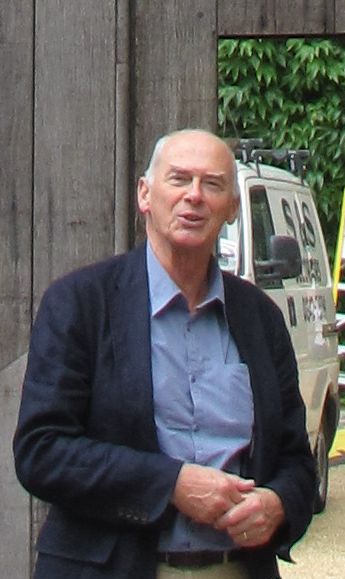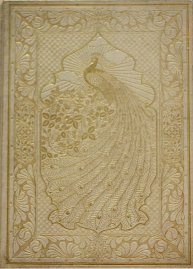 A new issue of Omariana, nr. 6 (Winter 2018) is now available. As usual you will find new translations, new books, recent articles and more.
A new issue of Omariana, nr. 6 (Winter 2018) is now available. As usual you will find new translations, new books, recent articles and more.
Please use the subscription form if want to receive Omariana in your email box.
 A new issue of Omariana, nr. 6 (Winter 2018) is now available. As usual you will find new translations, new books, recent articles and more.
A new issue of Omariana, nr. 6 (Winter 2018) is now available. As usual you will find new translations, new books, recent articles and more.
Please use the subscription form if want to receive Omariana in your email box.
 A new issue of Omariana, nr. 7 (Winter 2019) is now available. As usual you will find new books, recent articles and more.
A new issue of Omariana, nr. 7 (Winter 2019) is now available. As usual you will find new books, recent articles and more.
Please use the subscription form if want to receive Omariana in your email box.
 Jos Biegstraaten, founder and long-time president of the Dutch Omar Khayyám Society, passed away Friday March 23.
Jos Biegstraaten, founder and long-time president of the Dutch Omar Khayyám Society, passed away Friday March 23.
Biegstraaten was the first in the Netherlands to bring Dutch enthusiasts and lovers of Omar together. They formed a small group of four, meeting twice a year in an informal setting, discussing and exchanging information about Khayyám and the Rubáiyát.
The club soon developed into a more serious society, including academics, publishers, translators and collectors, their efforts resulting in yearbooks, catalogues, contributions to journals and magazines, concerts and exhibitions and more. All of this thanks to Biegstraaten’s never ending enthusiasm and inspiration.
Jos was also a keen collector of rubaíyát editions. He loved to meet and talk to people who shared his interest, and he was proud to be a member of the prestigious London Omar Khayyam Club.
A particular field of interest became the ‘Omar Khayyám parody’, in which he was an expert. As if to express with Omar that life and life’s questions should be taken with a smile.
The Dutch Society will remember Jos Biegstraaten as a true friend of Omar, and a friend of all omarians.
 |
Das Buch Der Vierzeiler. Khaled Tobar; Salah Dschahin; Ibn Arous; Omar Chajjam. Welten, 2017. 76 p. ISBN: 978-1978164451 |
The ‘Nederlands Omar Khayyám Genootschap’, or Dutch Omar Khayyám Society, wa s founded in 1990 by four enthusiasts to share their love and interest in Omar. Initiated by Jos Biegstraaten, the Society was set up to gather, discuss, share and distribute knowledge and relevant information on all sorts of Khayyám related facts, findings and opinions.
s founded in 1990 by four enthusiasts to share their love and interest in Omar. Initiated by Jos Biegstraaten, the Society was set up to gather, discuss, share and distribute knowledge and relevant information on all sorts of Khayyám related facts, findings and opinions.
Soon after that the first Yearbook was published, in 1992, and others followed, with an irregular interval of about four years. The latest issue is a special on the occasion of the 25th anniversary, containing short essays in which the members reflect on their membership and their relation to Omar Khayyám.
Over the years members have been in contact with Omarians from all over the world. A special occasion for meetings and discussions was the congress held in July 2009 in Leiden and Cambridge, and musical festivities in Amsterdam, in which the Society played an active role. Another event that attracted attention was an exhibition in Museum Meermanno, in 2009, highlighting the most important editions of FitzGerald’s translation representing developments in book publishing, typography and illustration.
The 25th anniversary will be celebrated Saturday, May 30, in Leiden, with a small congress for members and guests and a dinner. The program lists a reading on Omar Khayyám and Kavafis, by Michiel Leezenberg, associate professor in the Department of Philosophy, University of Amsterdam.
 The Rosicrucian Foundation in The Netherlands will organize a symposium on the poetry and lyrics of Hafiz, Rumi and Khayyám. The meeting is part of a series to investigate the great oriental movements of wisdom and philosophy.
The Rosicrucian Foundation in The Netherlands will organize a symposium on the poetry and lyrics of Hafiz, Rumi and Khayyám. The meeting is part of a series to investigate the great oriental movements of wisdom and philosophy.
The delicate Persian lyrics still exert a specific attraction to us. Persian poetry, music and wisdom spread over the continents from China to the West when our ancestors still went at each other with prongs and forks.
Some of the subjects that will be discussed are stories and music about Layla and Majnun, about Rumi, Shamsuddin of Tabriz, Mirabai, but also Krishna and Jesus. There will also be a small exhibition on Khayyám’s Rubáiyát, showing a number of mystical and sufi interpretations of his verses.
For more information (in Dutch) see: Soefi-meesters van de Liefde: Rumi en Hafez. Perzische bevrijdingslyriek voor het hart
The event will take place on June 13, 2016 in Bilthoven, The Netherlands.
Philip Bishop, bibliographer and rare book specialist, published a number of shorter essays on special bindings of the Rubáiyát that were  published by Thomas B. Mosher. One of the bindings is by Hans Asper, the other by George Bayntun. The essays are available on Bishop’s Mosher Press website: http://thomasbirdmosher.net/index1.html.
published by Thomas B. Mosher. One of the bindings is by Hans Asper, the other by George Bayntun. The essays are available on Bishop’s Mosher Press website: http://thomasbirdmosher.net/index1.html.
The direct links to the essays are
http://thomasbirdmosher.net/files/hans-asper-binding.pdf, for the Asper binding, and
http://thomasbirdmosher.net/files/acquisitions-since-endpapers.pdf for the Bayntun binding essay.
Phil Bishop also published a large bibliographic volume on the Mosher Press editions, which includes of course the many rubáiyáts of Omar Khayyám.

St Michael and All Angels’ Church
Part of the global celebration of the United Nations 2015 Year of the Light is a reading of the ‘Rubáiyát of Omar Khayyám’ in the translation of Edward FitzGerald, by Charles Mugleston. The event will take place Sunday 3rd May at 3.00pm in St Michael and All Angels Church, Boulge, Suffolk.

Grave of Edward FitzGerald
Those who plan to attend the reading may also pay a visit to the churchyard where FitzGerald’s grave can be found.
 A somewhat peculiar website is: The Rubáiyát of Omar Khayyám, from Virginia Commonwealth University (Richmond, Virginia), that offers the Rubáiyát texts, (1st, 2nd and 4th renderings), a glossary, a bibliographical list, a short biography of Khayyám, a comparison between a number of quatrains by FitzGerald, the Persian text and a literal translation, and the introductions to the three editions.
A somewhat peculiar website is: The Rubáiyát of Omar Khayyám, from Virginia Commonwealth University (Richmond, Virginia), that offers the Rubáiyát texts, (1st, 2nd and 4th renderings), a glossary, a bibliographical list, a short biography of Khayyám, a comparison between a number of quatrains by FitzGerald, the Persian text and a literal translation, and the introductions to the three editions.
Also there are two critical essays “Creating Another’s Work: Edward FitzGerald’s The Rubáiyát of Omar Khayyám. A bibliographical essay” by Katie Elliott, and “FitzGerald’s second. Additions and Textual Changes in the 1868 Edition of The Rubaiyat of Omar Khayyam” by Thomas Minnick. You’ll find these in the Criticism chapter.
The website is presented in the form of a book, with various illustrations from a number of artists. Unfortunately there is no year of publication, but it is from a later date than 2002.